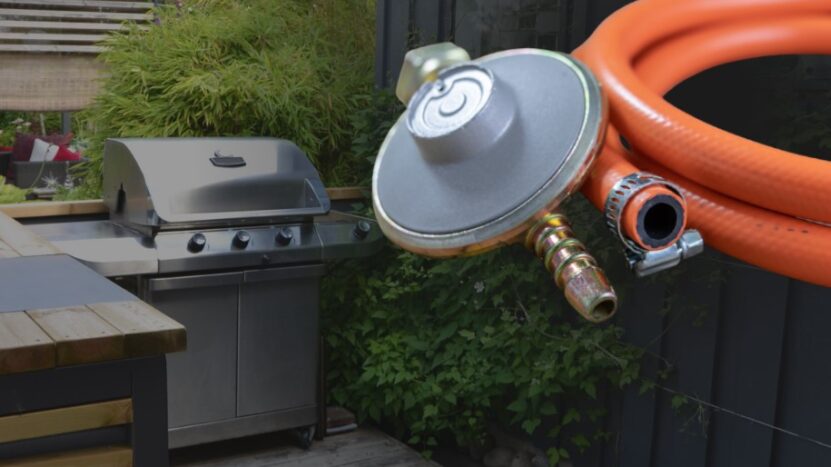Hey, there, grill enthusiast! Summer’s around the corner, and you’re all fired up to get your grill going. But there’s just one hitch – you’re tired of swapping out propane tanks all the time, and you’ve been thinking about connecting your grill to your house’s propane line. Is it possible? Yes, indeed! Is it convenient? Absolutely! Is it complex? Not really; if you follow along this comprehensive guide, I’ve put it together just for you.
We’re about to make those barbecues better, more comfortable, and a whole lot easier. Buckle up, and let’s dive into this process of connecting a gas grill to your house propane line.
Please remember that any work involving gas should be taken seriously due to potential safety hazards. You may want to consider hiring a professional. However, if you’re comfortable with some DIY and have the necessary safety precautions in place, here’s how you can do it yourself.
Supplies You’ll Need
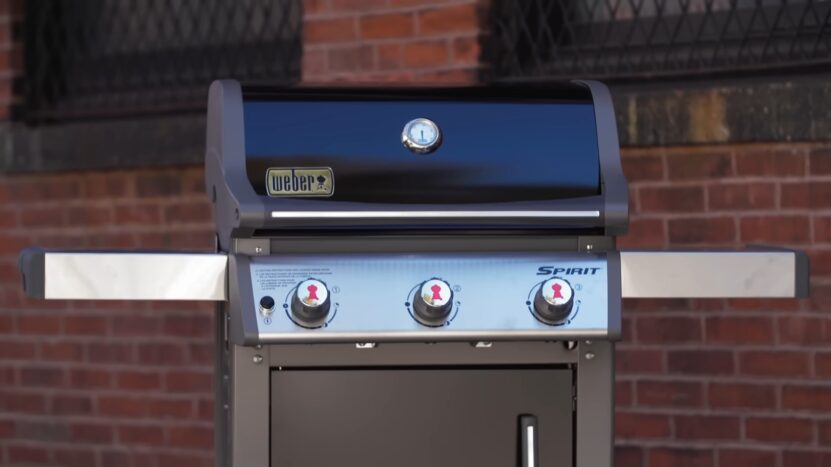
Before we delve into the process, let’s talk about the supplies you’ll need to make this connection.
- Gas Grill
- Propane Line Connection
- Gas Rated Teflon Tape
- Adjustable Wrench
- Shutoff Valve
- Gas Leak Detector Solution or Soapy Water
Pre-Connection Safety Tips
It’s crucial that we discuss some safety tips that you should keep in mind before, during, and after the process.
- Understand Your Grill: Not all grills are designed for natural gas or home propane lines. Ensure your grill is compatible.
- Location of Propane Line: Identify the location of your house propane line and its connection point. Ensure it’s easy to access.
- Shut off the Gas Supply: Before you start the process, turn off the propane supply to avoid any accidents.
- Ventilation is Key: Always work in a well-ventilated area to prevent gas buildup.
- Check for Leaks: Once done, always check for leaks. Use a leak detector solution or soapy water for this purpose.
Step-by-Step Guide to Connect Your Grill to Your House Propane Line
Step 1: Turn Off the Gas Supply
For safety, the first thing you’ll want to do is shut off the propane supply. This can usually be done at the propane tank for your house or the meter, depending on your setup.
Step 2: Remove the Existing Propane Tank
If your grill is currently hooked up to a separate propane tank, you’ll need to disconnect it. Make sure to close the valve on the tank first, then you can unscrew the regulator hose.
Step 3: Connect the Shutoff Valve
The shutoff valve allows you to turn off the gas supply directly at the grill rather than going to the main propane tank. Wrap gas-rated Teflon tape around the threads of the shutoff valve, and then screw it into the grill’s existing gas line.
Step 4: Connect to the Propane Line
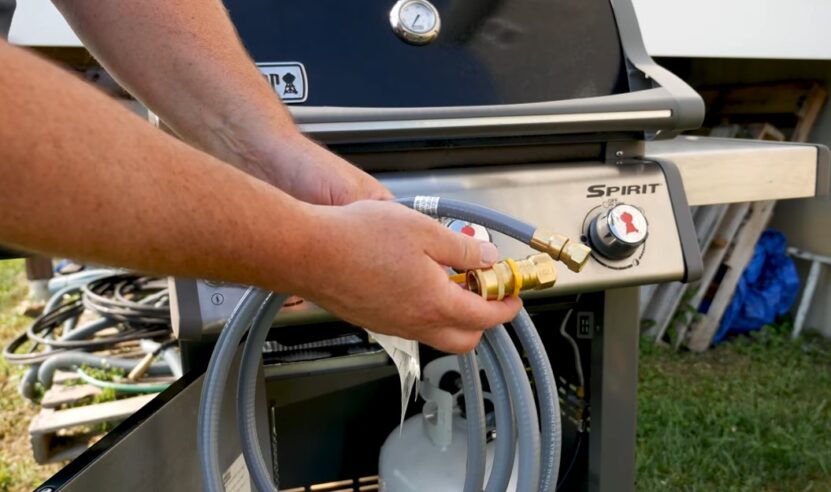
Now, it’s time to make the connection to your home’s propane line. The details may vary depending on the specifics of your line, but generally, you’ll need to remove the cap from the propane line, apply gas-rated Teflon tape to the threads, and then screw in your connection.
Step 5: Tighten All Connections
Make sure to tighten all connections using an adjustable wrench. Do not over-tighten as this can damage the threads.
Step 6: Check for Leaks
After making all the connections, turn on the propane supply and use a gas leak detector solution or soapy water to check for leaks. Brush the solution onto the connections. If you see bubbles forming, that indicates a leak. Turn off the gas, tighten the connection, and check again.
Step 7: Fire Up the Grill
Once you’ve confirmed there are no leaks, you’re ready to fire up your grill! Turn on the shutoff valve, light your grill according to the manufacturer’s instructions, and you’re good to go.
Advanced Tips to Keep In Mind
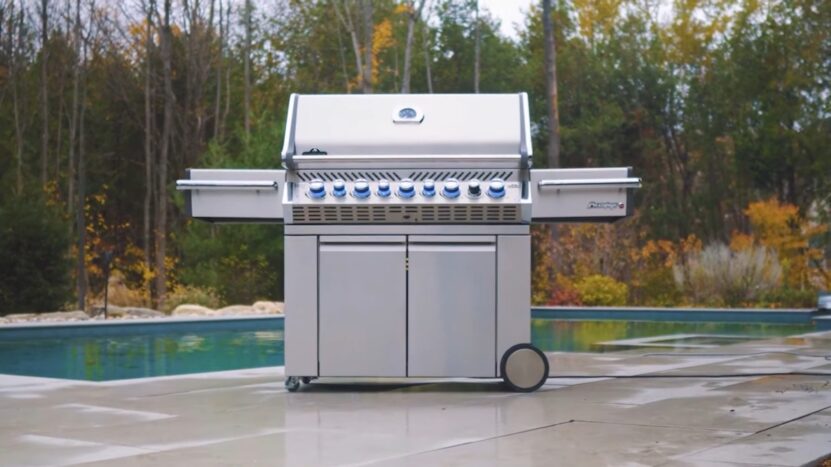
Once you’ve successfully set up the basic connection from your gas grill to your house propane line, there’s a whole lot more to explore to enhance your grilling experience. We’ve covered the basics in the first part of this guide; now let’s dig a little deeper into the subject.
Understanding Propane Gas Pressure
One crucial aspect often overlooked when connecting a gas grill to a house propane line is the pressure of the gas. Most grills are designed to work with propane gas provided at a specific pressure, typically around 11 inches of water column (about 0.4 psi). The gas pressure from a residential propane line can be much higher and may need to be regulated to avoid damaging your grill or creating a safety hazard.
Pressure Regulators
If you find that your propane line’s pressure is too high for your grill, you’ll need to install a pressure regulator. This device reduces the gas pressure to a safe level for your grill. Remember, though, that pressure regulation should be handled by a professional to ensure a safe installation.
Extend Your Propane Line for Optimal Grill Placement
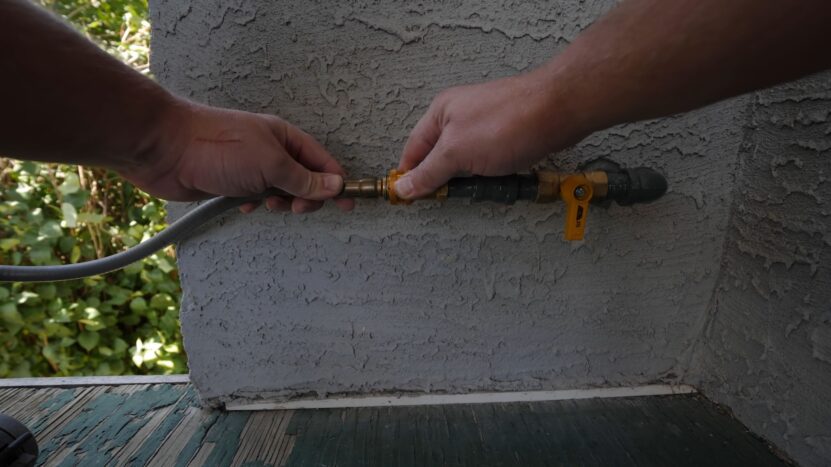
Perhaps your grill isn’t right next to your house, and you’re considering an extension to your propane line. This is entirely doable but requires extra care.
- Safety First: Before you begin, always turn off the gas supply. Digging when there is gas pressure in the line can lead to accidents.
- Professional Help: Extending a gas line requires a knowledge of local building codes and proper handling of the gas line materials. It’s best to hire a professional for this job to ensure it’s done safely and up to code.
Use a Quick Disconnect Fitting for Convenience
If you plan to move your grill around your patio, consider using a quick disconnect fitting. This allows you to quickly and easily disconnect your grill from the propane line without using any tools.
- Secure Your Grill: When using a quick disconnect, make sure your grill is on a stable surface and in a secure location to avoid accidental disconnection.
- Check for Leaks: Each time you reconnect your grill, remember to check for leaks with a gas leak detector solution or soapy water.
Periodic Maintenance
Once you’ve connected your gas grill to your house propane line, don’t forget to perform regular maintenance.
- Regular Inspections: Regularly inspect your connection points, hoses, and fittings for any signs of wear, damage, or leaks.
- Clean Your Grill: Keeping your grill clean not only enhances its performance but also helps you spot any potential issues early.
- Yearly Professional Check: It’s recommended to have a professional check your propane line and grill at least once a year.
Wrapping Up
We’ve taken a deeper dive into the process of connecting a gas grill to your house propane line, discussing some more advanced considerations and tips. These insights should help you make the most of your grilling experience.
Remember, working with gas requires a healthy respect for the potential dangers involved. If there’s anything you’re unsure about, always consult with a professional. Here’s to many happy and safe barbecue sessions in your future!

